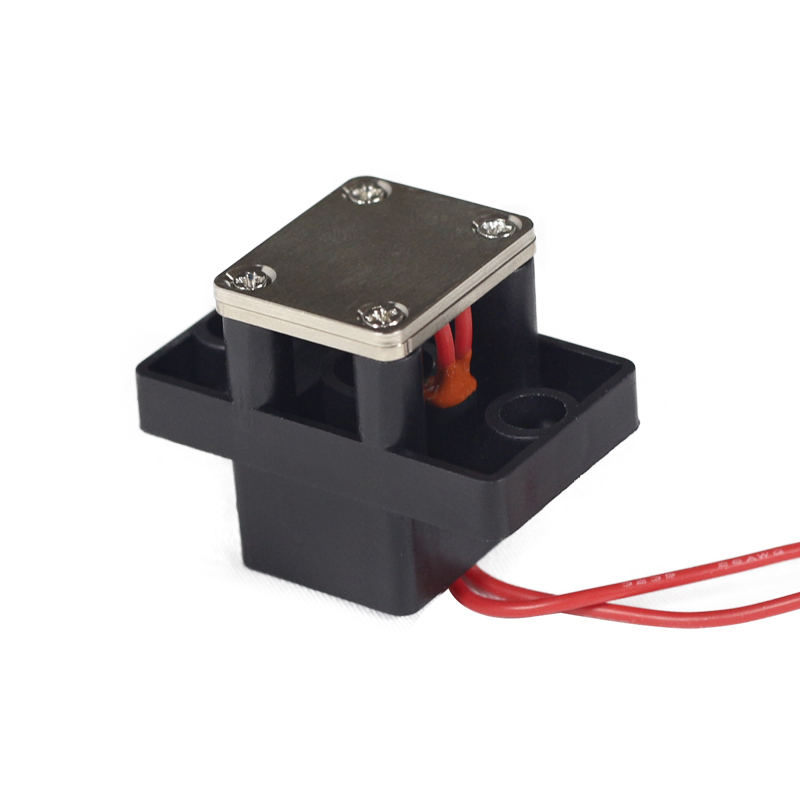Temperature measurement is crucial in a variety of industries, from manufacturing and healthcare to automotive and HVAC systems. The accuracy of temperature measurements is critical for ensuring processes run smoothly, products are of high quality, and systems function properly. Temperature Measurement Modules are designed to detect and record temperature readings, and their accuracy is influenced by several factors, including the type of sensor used and the quality of the electronics involved. In this article, we'll explore the factors that affect the accuracy of Temperature Measurement Modules and the different types of sensors that contribute to this precision.

1. Factors Affecting Accuracy in Temperature Measurement Modules
The accuracy of a temperature measurement module is determined by multiple variables, including the sensor type, calibration, environmental conditions, and the design of the module itself. Here’s a breakdown of key factors that influence accuracy:
1.1. Type of Sensor
The sensor type is the most significant factor in determining the accuracy of temperature measurement modules. Different types of temperature sensors are used depending on the application, each offering different levels of precision. We will discuss the most commonly used temperature sensors below: Thermistors, RTDs (Resistance Temperature Detectors), and Thermocouples.
1.2. Sensor Calibration
Temperature sensors require calibration to ensure their accuracy. Inaccurate calibration can result in readings that deviate from the actual temperature. High-quality temperature measurement modules are calibrated under precise conditions to achieve reliable results. Poor calibration can lead to sensor drift over time, reducing measurement accuracy.
1.3. Environmental Conditions
Environmental factors such as electromagnetic interference (EMI), humidity, and physical obstruction can affect the sensor's performance and accuracy. Proper shielding and calibration for environmental factors are important to maintain high accuracy levels.
2. Types of Temperature Sensors and Their Accuracy
Different sensors are used in temperature measurement modules, each suited for specific applications and offering varying levels of accuracy. Let’s examine the most common types of temperature sensors:
2.1. Thermistors
Thermistors are a type of temperature sensor that offers high sensitivity and precision. They are made from ceramic materials whose resistance changes with temperature. Thermistors are widely used in low- to medium-temperature applications (tyPIcally between -50°C to 150°C), offering accuracy levels as high as ±0.1°C in ideal conditions.
The high accuracy of thermistors makes them suitable for applications that require detailed temperature readings, such as laboratory experiments, medical devices, and precise manufacturing processes. However, their performance may be limited by their relatively narrow temperature range.
2.2. RTDs (Resistance Temperature Detectors)
RTDs are known for their excellent accuracy and stability. These sensors operate based on the principle that the electrical resistance of certain materials (usually platinum) increases with temperature. RTDs are often used in a wide range of industrial applications, from HVAC systems to automotive temperature monitoring.
The accuracy of RTDs typically ranges from ±0.5°C to ±1.0°C, making them ideal for moderate to high-temperature applications. RTDs offer high precision and are known for their long-term stability, making them a popular choice in applications where consistency is crucial. However, they are generally more expensive and slower to respond than thermistors.
2.3. Thermocouples
Thermocouples are the most widely used temperature sensors for extreme temperature applications. These sensors work by generating a small voltage that is proportional to the temperature difference between two metal junctions. Thermocouples are capable of measuring a wide range of temperatures, from -200°C to 1,800°C or more, making them ideal for high-temperature environments, such as furnaces and industrial machinery.
While thermocouples are incredibly versatile, their accuracy can vary significantly depending on the type of thermocouple and the temperature range. The typical accuracy of thermocouples ranges from ±1.5°C or more, with certain types offering higher precision. The Type K thermocouple, for example, is commonly used for general-purpose applications but may not provide as high accuracy as an RTD or thermistor.
3. Why Accuracy Matters in Temperature Measurement Modules
Accurate temperature readings are essential for various applications:
3.1. Process Control
In industries such as manufacturing, food production, and pharmaceuticals, maintaining precise temperature control is crucial for product quality and safety. Even slight deviations from the desired temperature range can lead to defects, spoilage, or safety risks.
3.2. Environmental Monitoring
Accurate temperature readings are necessary for climate monitoring, weather forecasting, and environmental studies. Small changes in temperature can have a significant impact on ecosystems and climate patterns, making precise measurements vital for data accuracy.
3.3. Safety
Temperature sensors are often used in safety systems, such as fire alarms and cooling systems in electronic devices. In these cases, even a small inaccuracy in the temperature reading can compromise the effectiveness of the safety mechanism.
4. Improving Accuracy in Temperature Measurement Modules
To improve the accuracy of temperature measurement modules, several factors need to be considered:
4.1. High-Quality Sensors
Using high-quality sensors, such as precision RTDs or thermistors, can significantly improve the accuracy of temperature measurements. Ensuring that sensors are manufactured to meet strict standards can help maintain reliability.
4.2. Proper Calibration
Routine calibration is essential for keeping temperature measurement modules accurate over time. Calibration should be performed in controlled conditions and at regular intervals to minimize drift.
4.3. Environmental Compensation
To account for environmental factors like EMI, temperature modules should be shielded properly, and the sensors should be chosen based on the environmental conditions in which they will operate.
The accuracy of temperature measurement modules depends largely on the type of sensor used and the conditions under which the module operates. Thermistors offer high accuracy for low-temperature applications, RTDs provide excellent precision in a wide temperature range, and thermocouples are ideal for extreme temperature measurements. When selecting a temperature measurement module, it's important to consider the application requirements, desired accuracy, and environmental factors.






